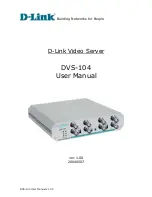
104
Chapter 7: Troubleshooting and Support
System Boot Failure
If the system does not display Power-On-Self-Test (POST) or does not respond after the
power is turned on, try the following:
•
Turn on the system with only one DIMM module installed. If the system boots, check for bad
DIMM modules or slots by following the Memory Errors Troubleshooting procedure below.
Memory Errors
•
Make sure that the DIMM modules are properly and fully installed.
•
Confirm that you are using the correct memory. Also, it is recommended that you use the
same memory type and speed for all DIMMs in the system. See Section 3.3 for memory
details.
•
Check for bad DIMM modules or slots by swapping modules between slots and noting the
results.
Losing the System Setup Configuration
•
Use a high quality power supply. A poor quality power supply may cause the system to
lose the CMOS setup information.
•
Check that the motherboard battery still supplies approximately 3VDC. If it does not,
replace it.
If the above steps do not fix the setup configuration problem, contact your vendor for repairs.
When the System Becomes Unstable
If the system becomes unstable during or after OS installation, check the following:
•
CPU/BIOS support: Make sure that your CPU is supported and that you have the latest
BIOS installed in your system.
•
Memory: Make sure that the memory modules are supported. Refer to the product page on
our website at
www.supermicro.com
. Test the modules using
memtest86
or a similar utility.
•
Storage drives: Make sure that all drives work properly. Replace if necessary.
•
System cooling: Check that all heatsink fans and system fans work properly. Check
the hardware monitoring settings in the BMC to make sure that the CPU and system
temperatures are within the normal range. Also check the Control panel Overheat LED.
















































